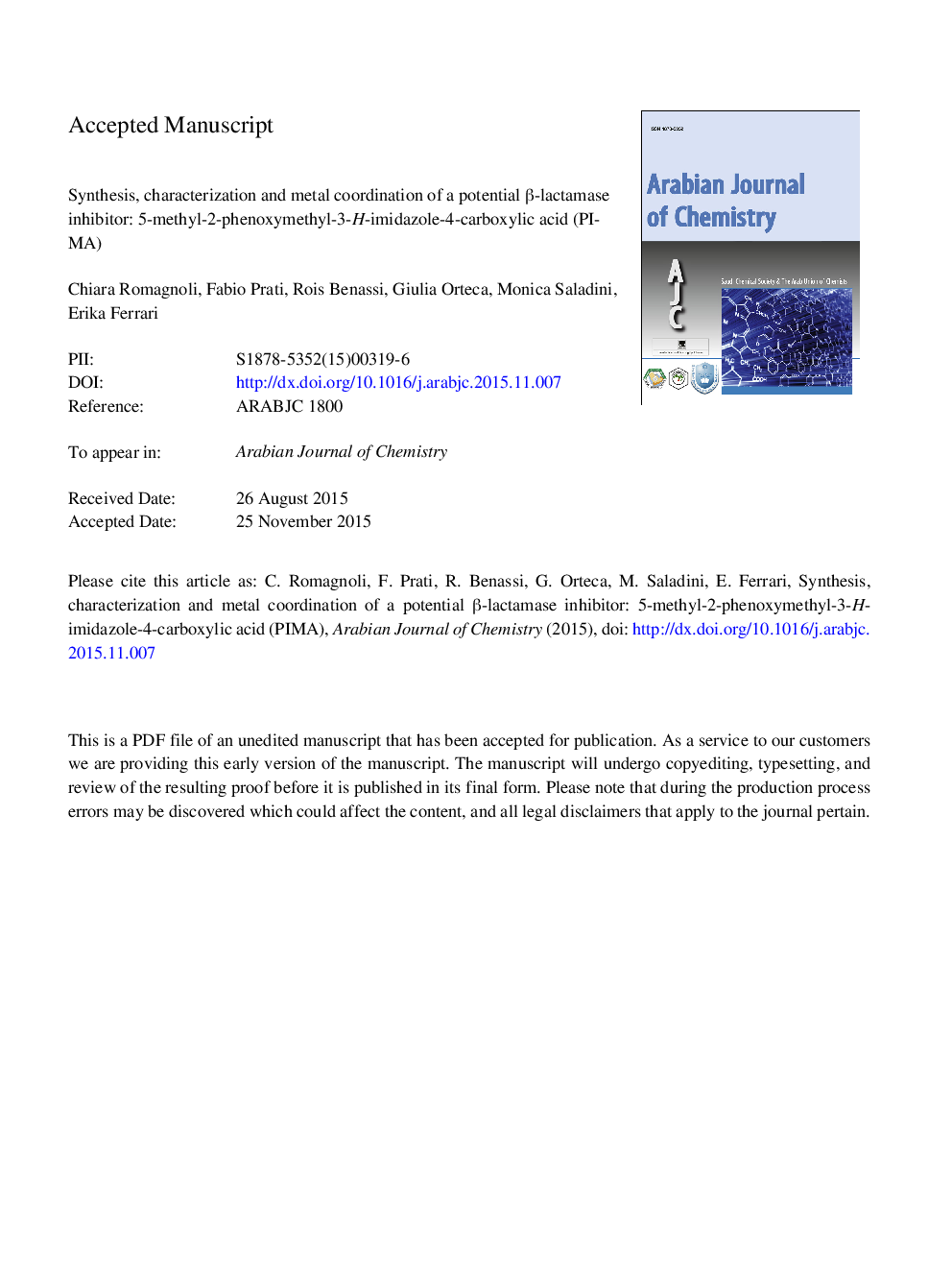| Article ID | Journal | Published Year | Pages | File Type |
|---|---|---|---|---|
| 7691858 | Arabian Journal of Chemistry | 2017 | 28 Pages |
Abstract
Among relevant metal ions in biological systems, zinc and iron play a key role as active partners of the catalytic machinery. In particular, the inhibition of metal enzymes that are involved in physiological and pathological processes has been deeply investigated for the rational design of selective and efficient drugs based on chelators. Since imidazole histidine residue is one of the most versatile sites in proteins, especially in enzymes acting in the presence of metal ions as cofactors, in this work the synthesis and characterization of a new imidazole derivative, namely 5-methyl-2-phenoxymethyl-3-H-imidazole-4-carboxylic acid (PIMA) is reported. PIMA was designed as metallo-β-lactamase inhibitor thanks to its similarity with penicillin V, a β-lactam antibiotic inactivated by metallo-β-lactamase, for which there are no commercially available inhibitors. The evaluation of PIMA coordinating ability toward iron, zinc, and gallium, these latter selected as a non-paramagnetic probe for iron, is performed by theoretical DFT calculations and in solution by experimental techniques, i.e. potentiometry, UV-vis and NMR spectroscopy. PIMA exhibits an efficient metal chelating ability; the prevailing species in physiological condition are ML3 for Fe3+ and Ga3+ and ML2 for Zn2+, in which chelation is due to deprotonated carboxylic oxygen and imidazole nitrogen in the N,O donor set. The demonstrated ability of PIMA to chelate zinc ion, combined with its structure similarity with penicillin V, supports further exploration of this imidazole-4-carboxylate as metallo-β-lactamase inhibitor.
Related Topics
Physical Sciences and Engineering
Chemistry
Chemistry (General)
Authors
Chiara Romagnoli, Fabio Prati, Rois Benassi, Giulia Orteca, Monica Saladini, Erika Ferrari,
